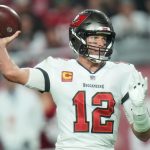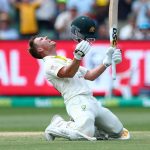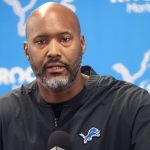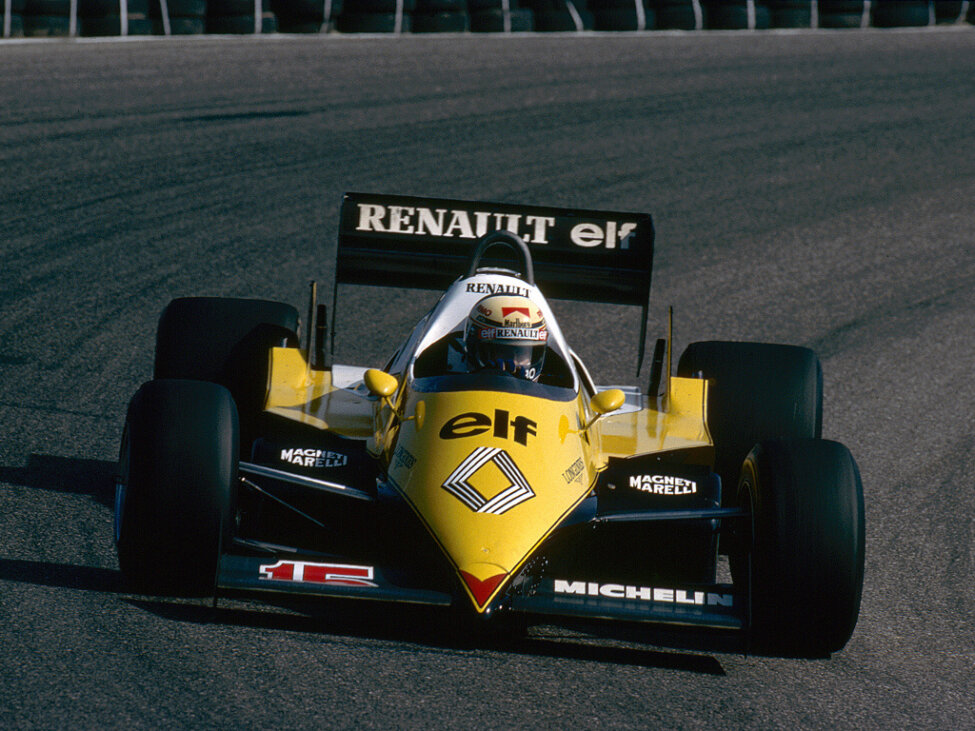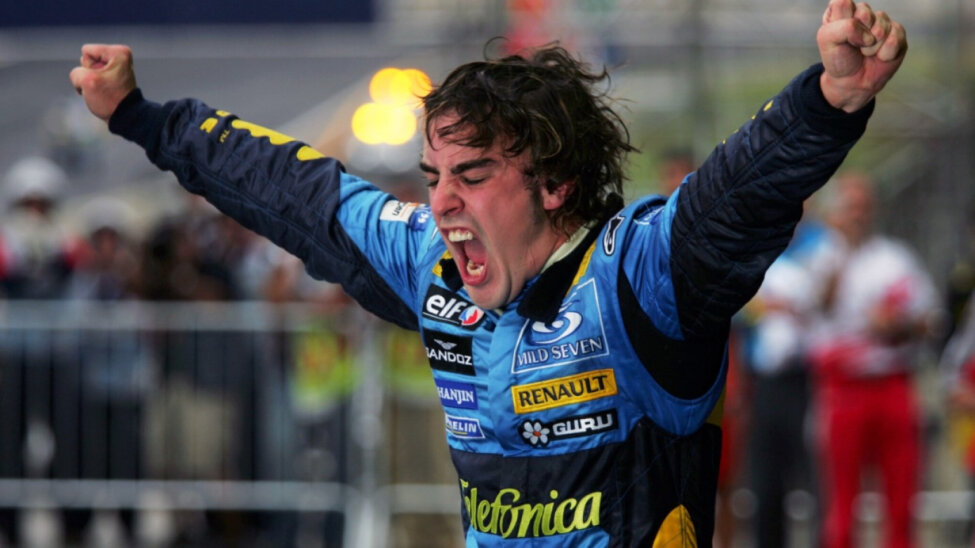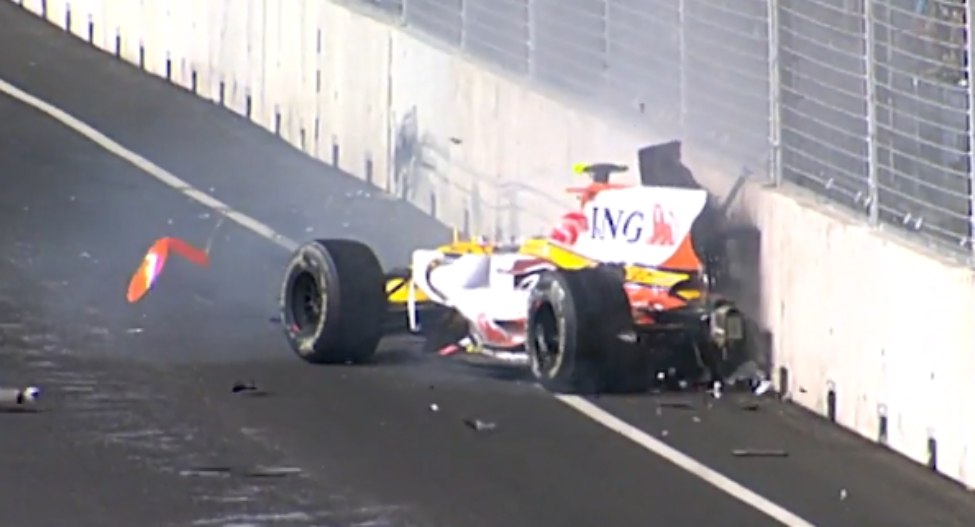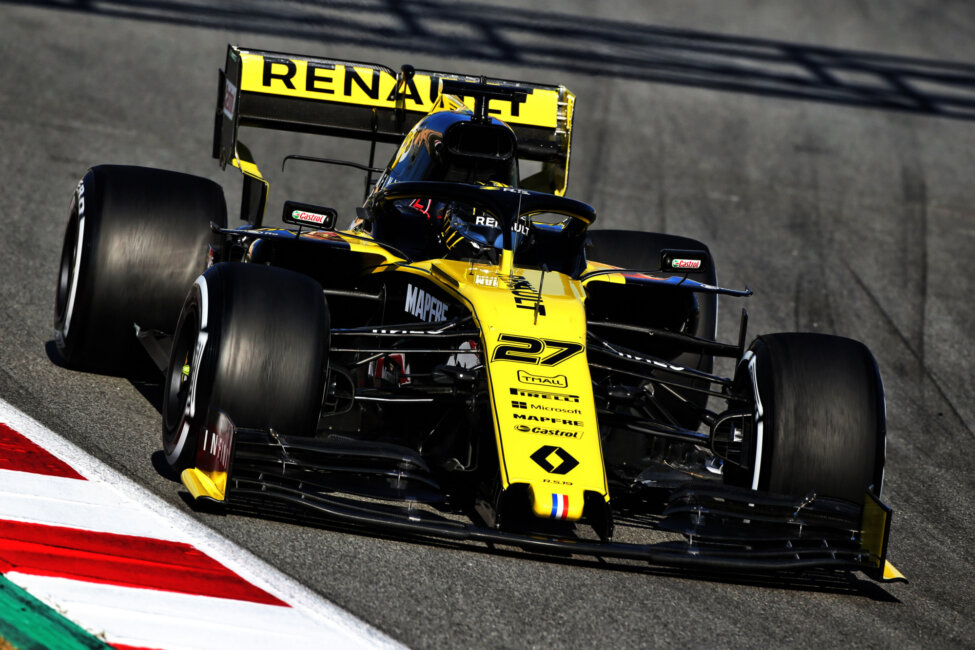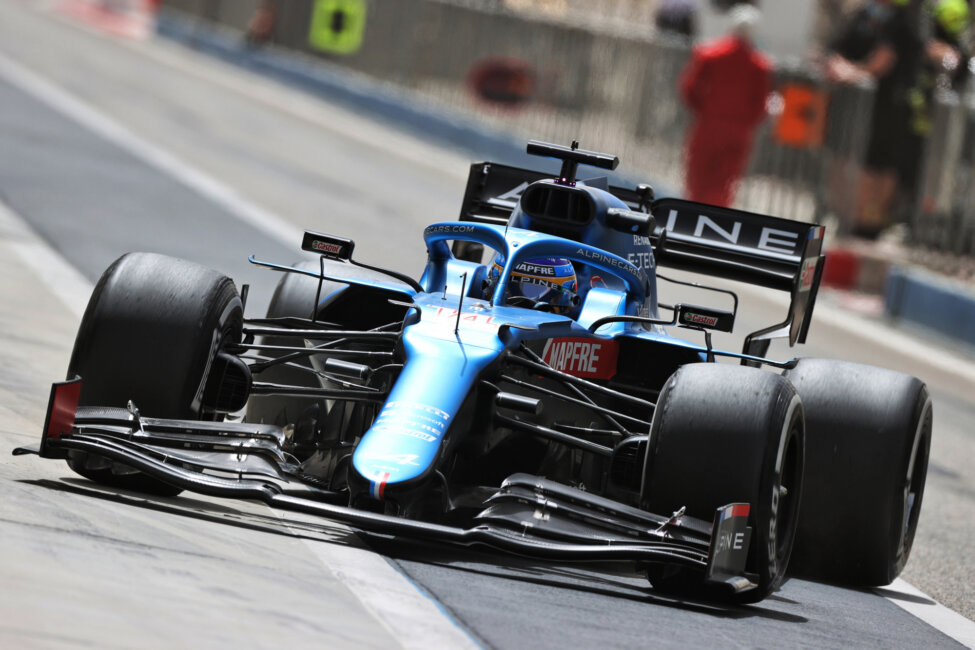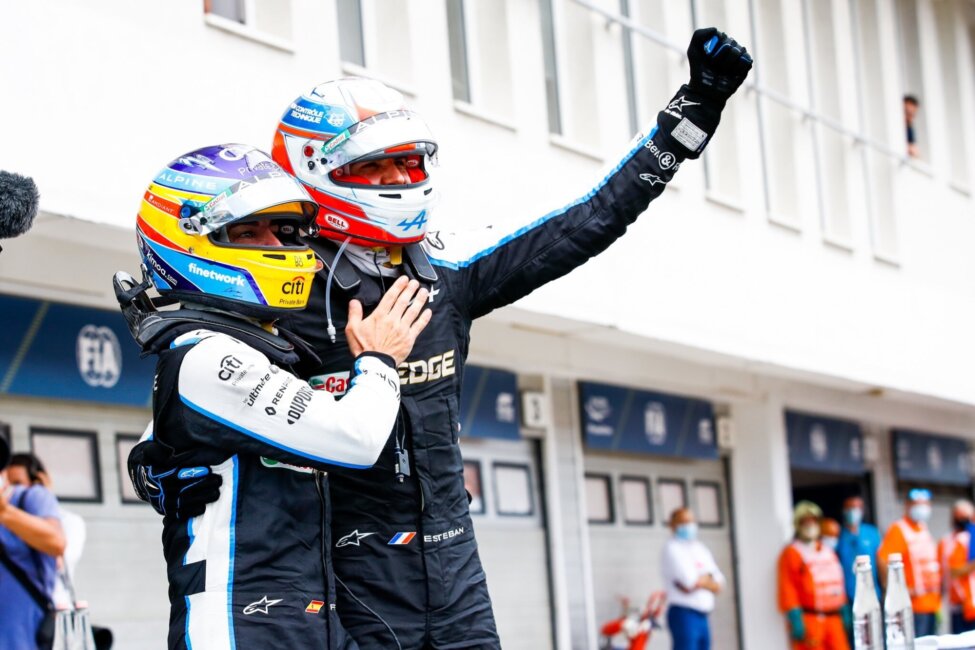Alpine F1 – Latest F1 news about the Alpine F1 team
After Renault rebranded as Alpine F1 for 2021, Fernando Alonso and Esteban Ocon helped the team to take fifth place in the Constructors’ Championship. Can they improve further in 2022?
Origins of Renault in F1
Renault’s first involvement in Formula 1 dates back to the 1977 season. The team competed in the final rounds of the campaign, with Jean-Pierre Jabouille driving the Renault RS01 that featured the first regularly-used turbo engine in F1 history, the Renault-Gordini V6 1.5 L.
Initially scheduled to debut at the French Grand Prix, the car wasn’t ready and instead made its debut during the following round in Great Britain. Renault missed the next two events in Germany and Austria in an attempt to improve performance. The team failed to qualify in Canada, as 27 drivers entered but one would not qualify, which ended up being Jabouille. As a result, Renault opted not to travel to the season finale in Japan.
Unfortunately for Renault, the car and engine proved incredibly unreliable, earning the nickname of “Yellow Teapot” and failing to finish any of its races.
Things didn’t improve all that much the following year, as blown engines resulted in four consecutive retirements, though there were signs of progress towards the end of the season. The RS01 qualified third on two occasions, while a fourth-place finish at Watkins Glen near the end of 1978 gave Renault their first F1 points.
The team expanded to two cars in 1979 with Rene Arnoux joining Jabouille. The latter took pole position at the third race of the campaign in South Africa, while Renault introduced a new ground-effect car, the RS10, by mid-season. Renault finally emerged onto the F1 scene at the French Grand Prix, with Jabouille and Arnoux qualifying on the front row. The former took the chequered flag ahead of Ferrari’s Gilles Villeneuve, who finished just 0.024s ahead of Arnoux.
Arnoux showed Renault’s pace was no fluke at the following race at Silverstone, finishing second while the team ended the year sixth in the Constructors’ Championship with 26 points.
Success continued in 1980, as Arnoux took consecutive wins in Brazil and South Africa. Jabouille, though, continued to have issues with retirements. Nevertheless, his only points finish was a memorable one, as he won the Austrian Grand Prix ahead of eventual World Champion Alan Jones, with Renault ending the year in fourth.
Alain Prost joined the team in 1981, taking three victories in his maiden campaign while teammate Arnoux’s best result was a second-place finish in Austria. This helped Renault to finish third in the standings.
Prost just misses out on Drivers’ Championship
Prost and Arnoux took four wins in the 1982 season, with the former finishing fourth in the standings – 10 points behind World Champion Keke Rosberg – while Renault finished third. Arnoux left for Ferrari in 1983, but Prost remained and had his best season to date, winning four races while battling with Brabham’s Nelson Piquet for the World Championship.
Unfortunately his push fell just short, as Piquet took the title thanks to a third-place finish at the season-ending South African Grand Prix, where Prost retired with engine problems. Renault also finished second in the Constructors’ Championship, 10 points back from Ferrari.
Prost’s time with the team came to an end during the 1983 season, following his public comments criticising their lack of development of the Renault RE40 that saw him lose to Piquet. As a result, he moved to McLaren for 1984, while teammate Eddie Cheever departed for Alfa Romeo. Patrick Tambay and Derek Warwick were brought in at Renault and finished on the podium a combined five times, with Tambay starting on pole in France. The team finished fifth in the standings.
The outfit took a further step back in 1985, failing to record a win and only finishing on the podium twice, as the likes of Lotus and Ligier did better jobs with turbo engines. Renault did achieve an F1 first, however, running a third car at the new Nurburgring track that featured the first in-car camera, which was viewed by a television audience.
Unfortunately, financial problems hit the team as Renault could no longer justify the large fees needed to operate. As a result, CEO Georges Besse scaled down the company’s Formula 1 involvement from full team to just engine supplier for the 1986 season, and then went entirely out of F1 at the end of the year.
Renault return as F1 team
Renault purchased Benetton Formula Limited for $120 million in March 2000, marking the French manufacturer’s return to the F1 grid. Benetton started as Toleman Motorsport in 1981 before being bought and renamed by Benetton Formula in 1986, having being purchased by the Benetton family. The team moved to Enstone from Witney, Oxfordshire in 1992/93.
Despite the purchase, the team continued to use the Benetton constructor name in 2000 and 2001.
The duo of Jarno Trulli and Jenson Button made up Renault’s line-up in 2002 and, while neither driver managed to finish on the podium, they did help the team to end the year fourth in the Constructors’ Championship with 23 points.
Although Button scored 14 of those 23 points, he was dropped in favour of Fernando Alonso for the following year. The move paid off for Renault as the Spaniard won the 2003 Hungarian Grand Prix, the first for the French manufacturer since the 1983 Austrian race. Renault ended the campaign fourth in the Constructors’ Championship, 62 points up on BAR-Honda but 54 back from McLaren in third.
Trulli and Alonso returned for the following season. However, Trulli’s relationship with the team – and particularly Team Principal Flavio Briatore – began to sour. Although the Italian took victory in Monaco, many point to the French Grand Prix as the moment where relations became unsalvageable.
On the last lap, Trulli was overtaken by Ferrari’s Rubens Barrichello, costing Renault a double podium finish at their home race. From there, Trulli announced he was joining Toyota for the following year, though he ended up racing for the team in the final two races of the 2004 season. Jacques Villeneuve was brought in as his replacement to try and help Renault finish second in the standings to Ferrari, though ultimately they had to settle for third behind BAR.
Alonso leads Renault to glory
Giancarlo Fisichella took over as Alonso’s teammate in 2005, winning the opening race of the season in Australia after rain affected the qualifying session. However, it was the Alonso who really triumphed during the year, winning the following three races.
Although Kimi Raikkonen and McLaren battled back against reliability woes to make the championship battle interesting, Alonso secured the Drivers’ Championship in Brazil. Renault clinched the Constructors’ title at the following race in China, ending Ferrari’s winning run of six years. It was also the first time that Renault had won the title as a manufacturer, along with them being the second French constructor after Matra in 1969 to take top spot.
Both drivers returned for the 2006 season, with Alonso winning the season-opening Bahrain Grand Prix. He also claimed victory in Australia, while coming home second in Malaysia behind Fisichella for Renault’s first 1-2 finish since Arnoux and Prost in 1982.
Alonso took four consecutive wins midway through the season to hold a healthy lead in the standings. However, Ferrari and Michael Schumacher answered back with three straight victories. Both drivers entered the final two races level on points, but it was Alonso who came out on top after taking the chequered flag in Japan, while Schumacher retired with an engine failure. The Spaniard then clinched the title with a second-place finish in Brazil, a result that also helped Renault to clinch the Constructors’ Championship.
Decline and race rigging allegations
Fisichella remained at Renault in 2007 whilst Alonso left for McLaren, with Heikki Kovalainen stepping in for the Spaniard. The team failed to hit the heights of the previous two years, despite finishing the season third in the standings. Renault’s best result came near the end of the campaign when Kovalainen finished the Japanese Grand Prix in second spot, marking their only podium of the year.
At the end of 2007, the FIA accused Renault of possessing confidential information relating to McLaren’s cars, and they were charged with breaching article 151 (c) of the Sporting Regulations. Those charges were the same faced by McLaren earlier in the year regarding the Spygate scandal. Renault were not penalised over the matter.
Alonso returned to Renault in 2008, and drove alongside the promoted Nelson Piquet Jr. The two-time World Champion qualified on the front row for the Spanish Grand Prix, but it was a rare moment of success as the team struggled for much of the early campaign. Things improved following the German Grand Prix, which saw Piquet register the outfit’s first podium of the year by finishing second.
Alonso finished fourth in Belgium and Italy before taking the chequered flag in Singapore following Piquet’s early crash, claiming Renault’s first win since the 2006 Japanese Grand Prix. The Spaniard clinched victory again at the following race in Japan, before finishing the year with another win in Brazil as Renault ended the season fourth in the standings.
Renault started the 2009 campaign with hopes of challenging for both titles, yet it soon became clear that those goals were unrealistic. Alonso took pole in Hungary, but retired due to a fuel pump failure, while Piquet was replaced by Romain Grosjean for the final third of the season, though neither driver scored a point. Alonso’s best result came in Singapore where he finished third, but this was little consolation as Renault ended the year all the way down in eighth.
Issues emerged during the season regarding Alonso’s 2008 victory in Singapore. While Piquet initially claimed his accident was a simple mistake, after leaving the team in August 2009, allegations emerged stating that he had deliberately crashed in order to help Alonso to gain an advantage. Renault were charged with conspiracy and race fixing, while Team Principal Flavio Briatore and engineer Pat Symonds initially stated they would take legal action against Piquet. However, before a meeting with the FIA World Motor Sport Council, Renault announced they would not contest the charges and that both Briatore and Symonds had left the team.
Renault were disqualified from F1 but the decision was suspended for two years, meaning the team would be thrown out if a similar incident occurred before the end of the 2011 campaign. Briatore was banned from all Formula 1 and FIA sanctioned events, while Symonds received a five-year ban. Both were overturned by a French court, but Briatore and Symonds each agreed not to work in F1 or FIA-sanctioned events for a specified time as part of a later agreement with the governing body.
Scaled back involvement
Renault sold a majority stake in the team to Genii Capital in 2010, though they still retained a 25 percent stake in the team and continued as an engine supplier. Alonso left for the Ferrari in 2010 and Robert Kubica was brought in as his replacement. The Pole was partnered with Vitaly Petrov.
Results were better than the in previous season, as Kubica scored his debut podium with the team by finishing second in Australia, while Petrov’s first points came via a seventh-place finish in China. Kubica added third-place finishes in Monaco and Belgium to his tally to help Renault finish the season fifth in the standings.
Renault took a further step back in 2011 by becoming only an engine supplier, linking up with Lotus Cars for its remaining 25 percent stake in the team. The squad was renamed Lotus Renault GP, though the Renault chassis name continued to be used along with a new black and gold livery reminiscent of the John Player Special design of the 1980s. The name also resulted in Lotus Racing – who were using a licence from Group Lotus that was later terminated – to rebrand itself as Team Lotus.
The outfit raced under a British licence in 2011, leaving Formula 1 without a team using a French licence for the first time since the 1975 season. Kubica suffered serious injuries during a rally accident in Italy prior to the start of the season, resulting in Nick Heidfeld being brought in as his replacement.
Petrov started the campaign with a third in Australia, while Heidfeld did the same at the following race in Malaysia. Bruno Senna replaced the German for the Belgian Grand Prix, and collected two points during the rest of the year. Renault finished the season in fifth. The squad announced the hiring of Kimi Raikkonen and Romain Grosjean for 2012, with the team now going by the name of Lotus F1 Team.
Return to the F1 grid
Renault announced that a takeover transaction was being discussed for the Lotus F1 Team ahead of the 2016 season. The R.S.16 was driven by Kevin Magnussen and Jolyon Palmer, with Esteban Ocon serving as reserve driver, and the team ended the year in ninth place with eight points. Frederic Vasseur left his post as Team Principal at the conclusion of the season following disagreements with team personnel, and Cyril Abiteboul became Managing Director.
Nico Hulkenberg was brought in for 2017, while Magnussen departed for Haas prior to the start of the season. Although Palmer remained with Renault, he was eventually replaced by Carlos Sainz from the United States Grand Prix onwards after finishing in the points just once. The Spaniard ended the race in seventh, outqualifying Hulkenberg as well. The team finished the season in sixth place in the Constructors’ Championship with 57 points.
Renault took a big step forwards in 2018, with Hulkenberg and Sainz remaining in the fold. Although the team failed to finish on the podium, they were a constant top-10 threat throughout the campaign. Their best results came in Azerbaijan and Germany, with Sainz and Hulkenberg finishing fifth at the respective events. Renault ended the year fourth with 122 points.
Daniel Ricciardo joined the team on a two-year contract to partner Hulkenberg in 2019. The outfit didn’t experience the same success as they had in the previous year, as reliability woes and poor aerodynamic performance prevented them from making that next step up from the F1 midfield. Their best result came via Ricciardo’s fourth-place finish at the Italian Grand Prix, while both cars were disqualified from the Japanese event due to their automatic brake balance changing system being deemed illegal. The team amassed 91 points over the course of the season, putting them fifth in the standings.
Ocon joined on a multi-year contract for the 2020 season to replace Hulkenberg, and Renault enjoyed an improved campaign. Ricciardo and Ocon finished fourth and fifth in Belgium to bring home 23 points, the most Renault had ever scored in a race.
Ricciardo took third at the Eifel Grand Prix, marking Renault’s first podium since Malaysia 2011, and he followed that up with another P3 at the Emilia Romagna Grand Prix. Ocon did one better at the Sakhir Grand Prix, finishing second for his first career podium.
Renault rebrands as Alpine
In September 2020, Groupe Renault announced that their works team’s new name for 2021 would be Alpine, in an attempt to promote the Alpine marque.
Whilst Ocon was retained for a second consecutive season, Ricciardo left the team to join McLaren. Fernando Alonso returned to F1 following a two-year hiatus to replace the Australian, and other changes included the departure of Abiteboul from the role of Managing Director.
The squad’s first race under the Alpine guise was not ideal, with Alonso forced to retire in bizarre circumstances when a sandwich wrapper lodged itself in the car’s brake duct, whilst Ocon finished outside of the points in 13th.
Both drivers earned points at the next race in Imola, as was the case in Portugal. In fact, Alpine went on to consistently claim points at every subsequent event for the remainder of the season, with the United States Grand Prix being the only exception.
One of the team’s greatest moments came at the Hungarian Grand Prix, where Ocon was able to surge through the field from eighth to second after a first-corner incident on the opening lap saw several cars ahead either eliminated or left with damage due to a first-corner incident.
The Frenchman then took the lead of the race when Lewis Hamilton pitted for dry tyres one lap later than the rest of the field. Ocon was able to stay at the front for the rest of the afternoon, and subsequently claimed his first victory in Formula 1.
Meanwhile, Alonso helped in his teammate’s efforts to win the race by defending against the charging Hamilton in order to prevent the Mercedes driver from challenging Ocon up ahead for the win. Ocon went on to praise the Spaniard for the role he had played.
At the Qatar Grand Prix later in the year, Ocon was able to repay the favour to Alonso by putting in some similarly defensive driving when the Spaniard was in the running for third. This became Alonso’s first podium in F1 since 2014.
Ultimately, Alpine finished the 2021 campaign with 155 points, putting them fifth in the Constructors’ Championship.
High hopes for the 2022 season
Both Ocon and Alonso will again race for Alpine in 2022. Ocon has signed a multi-year contract with the team, whilst Alonso has suggested that he plans to stay in the sport for “at least two or three years more”.
There has been much talk about Alpine’s prospects for the new season, and Ocon has warned that that they could be “dangerous” to their rivals.
Meanwhile, further personnel changes have taken place at the team, with Alain Prost departing from his role of Non-Executive Director, whilst Marcin Budkowski will leave his position of Executive Director.


